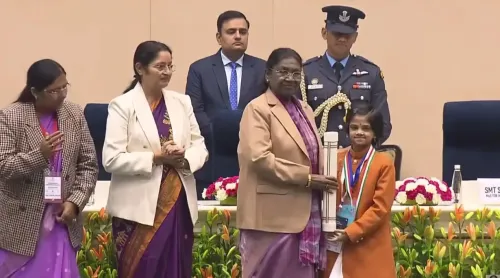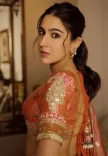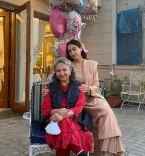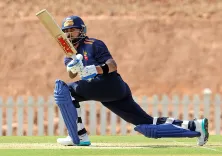Is FDCI Ready to Transform Couture Fashion Towards Sustainability?
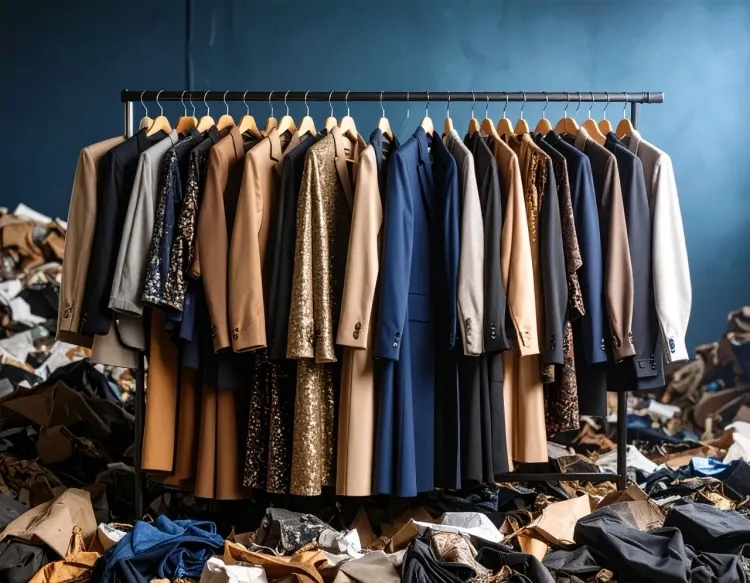
Synopsis
Key Takeaways
- Sustainable fashion requires more than token gestures; it needs dedicated focus.
- Emerging brands must have a platform to showcase their commitment to sustainability.
- Couture can and should integrate sustainable practices for a positive impact.
- Preserving traditional craftsmanship is vital to sustainability.
- India's rich textile heritage showcases the potential for sustainable fashion.
Mumbai, July 26 (NationPress) The fashion sector is among the most environmentally damaging industries globally. As the climate crisis intensifies, mere tokenistic gestures towards sustainability are inadequate. For the Fashion Design Council of India (FDCI), which serves as the pinnacle of Indian fashion, the concept of sustainability is confined to a single day in an otherwise extravagant week filled with opulent showcases.
A day dedicated to sustainability during a fashion week appears to be a positive step, yet many in the fashion community perceive it as merely a “tick-box” exercise rather than a genuine commitment.
This leads to a broader contemplation regarding why sustainable fashion is often treated as a secondary aspect amidst the celebrations of fashion, even though responsible styles can be categorized as couture.
Deepthi Potheni, Founder of Deep Thee, expressed to IANS, “Sustainable fashion absolutely warrants its own dedicated fashion week. One day is insufficient to encompass all facets — from ethical sourcing and fair wages to environmentally friendly materials.”
Emerging brands genuinely committed to sustainability often find themselves overshadowed by larger names.
Potheni stated, “They require their own platform to shine.”
Moreover, she emphasized that establishing a separate Sustainable Fashion Week could yield significant changes, provided it receives proper support, funding, and a fundamental shift in the fashion industry's mindset. Currently, dedicating just one day during LFW seems more like a superficial effort rather than a genuine concern for the issue,” Potheni elaborated.
The founder further noted, “Increased emphasis on sustainable fashion could encourage large brands to elevate their offerings to include more eco-friendly options.”
A full week devoted to sustainable fashion could revolutionize our perception of the industry, making ethical practices the new standard.”
National Award-winning designer Gaurang Shah firmly believes that sustainable fashion should be classified as couture.
“Couture signifies excellence, embodying something crafted with skill, intention, and profound respect for detail. A Jamdani saree may take weeks or months to weave, crafted entirely by hand, motif by motif, without shortcuts. To me, this represents the highest form of couture, originating from our weavers, rather than factories,” Shah remarked to IANS.
Shah emphasized that couture is not exclusively about “glossy surfaces; it also resides within the looms of our villages.”
For Shah, whose work prominently features jamdani weaves, sustainable fashion is not a recent trend.
“It is a lifestyle we have embraced for generations. When I engage with Jamdani, I don't just design garments; I continue a tradition that honors the earth, the artisan, and the craft. The process is deliberate, slow, and grounded in dignity.”
For the acclaimed designer, sustainable fashion stems from the preservation of traditional artistry, weaving, and our cultural heritage.
“It must remain pure, even if modernized and presented in innovative ways; its essence should remain intact. By safeguarding our handwoven textiles, we are not merely protecting fabric, but also preserving narratives, livelihoods, and identities.”
India stands as one of the world’s largest textile producers, yet hosts fewer than five major sustainable fashion shows annually, with FDCI’s prestigious Fashion Week only dedicating a day to this celebration.
Shah concurs that a single day at a fashion week falls short of recognizing the variety of sustainable practices present in India.
“One day cannot adequately honor the richness and diversity of sustainable practices in India. Our crafts, particularly handlooms, embody true sustainability, utilizing natural materials, local knowledge, and human craftsmanship.”
“They operate outside seasonal trends, adhering to time and tradition.”
The demands of commercial fashion hinder the establishment of a full week.
Shah stated: “The pressure of commercial fashion is what prevents it from evolving into a full week. Handcrafted works require time, and in a fast-paced system, slow fashion frequently gets overlooked.”
“If we adjust our focus to prioritize process over speed, we can uncover immense value in what we already possess.”
Mamta Reddy from Kalamcreations asserts that sustainable fashion is not just a fleeting trend, but a commitment. She recognizes that for Kalamkari, time is essential.
According to the Fourth All India Handloom Census, there are over 36 lakh weavers and allied workers in the handloom sector.
Sustainable fashion warrants a couture label due to its remarkable craftsmanship, innovation, and thoughtful design.
Similar to haute couture, sustainable fashion emphasizes quality over quantity.
Reddy also firmly believes that sustainable fashion can indeed be couture.
“If couture signifies something crafted with care, by hand, and is unique, then Kalamkari embodies that. Each design is painted freehand, making every piece distinct. It is neither printed nor traced, and never mass-produced, which renders it one of a kind,” Reddy informed IANS.




